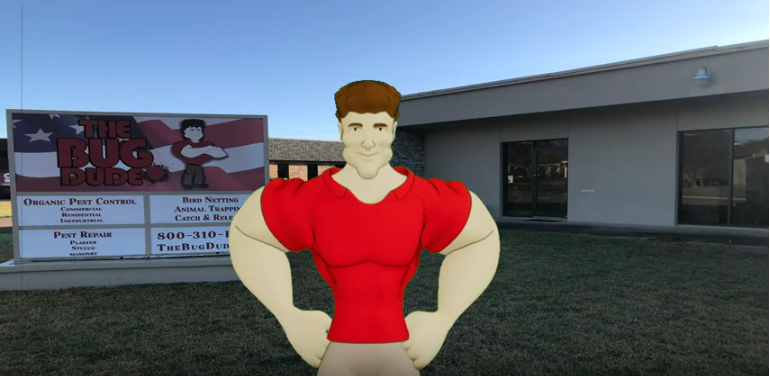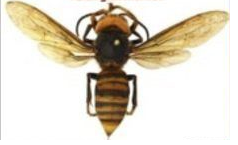
A new insect, with a terrifying moniker, has been dominating news stories across the U.S. the last few months: the aptly named ‘Murder Hornet.’ This giant hornet, actually named the Asian Giant Hornet, has been spotted for the first time in the wild on our shores and it has sparked concern that a new invasive species may be making a foothold on our continent. Though the possibility of a new invasive species is always problematic, the ‘Murder Hornets’ are of greater than average concern because they prey upon honeybees, which are already under attack from another notorious invasive species: the Africanized Honeybee. As most people know, honeybees are of great importance not only for the honey they produce, but for the pollination they provide to countless plants, which is why having two separate species preying on them in our country is a devastating thought.
Though Asian Giant Hornets have not yet been reported in Texas (in fact, as of now, they have only been documented in Washington state and in parts of Canada), the efforts currently underway on the west coast will likely determine if or when we could expect to see these monstrous pests make their way to us. With their future on our continent currently being contested, it’s helpful to know as much as you can about these pests, not only to help in the fight to keep them from gaining a foothold here, but also to understand what makes a hornet so incredibly news-worthy.

What Exactly is an Invasive Species?
The governmental definition of an invasive species is: “an alien species whose introduction does or is likely to cause economic or environmental harm or harm to human health.” In short, what this refers to are non-native species (whether plant or animal) that have been so successful on our shores that they are dangerous to our ecosystem, agricultural businesses, or to human health. In Texas a few notorious examples are: feral hogs, red fire ants, and Africanized Honeybees.
What Do Asian Giant Hornets Look Like?
Asian Giant Hornet queens are some of the largest wasps in the world, growing to over 2 inches long with a wingspan of 3 inches. Though this would be a terrifying sight, the queens are only ever found outside of the nest in spring before the workers emerge, or when they are hibernating. The Asian Giant Hornet workers are still incredibly large, at 1.5 inches long; this is about three times the size of an average yellow jacket worker. Like yellow jackets, their coloring is a combination of yellow and black, with a yellow head, black thorax, and a striped yellow and black abdomen. They also possess a stinger that is long enough to pierce standard beekeeping protective gear.
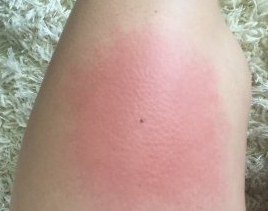
Why Are Asian Giant Hornets Called ‘Murder Hornets’?
The term ‘Murder Hornet’ is not one you are likely to hear used by entomologists (and not just because they would be using their technical name: Vespa mandarinia), rather it is a term for Asian Giant Hornets that has largely been applied colloquially due to the dangers that these huge wasps can pose. Not only are these wasps adept group hunters, they can also dose their victim with a large amount of venom, making the moniker seem particularly apt, which probably accounts for the widespread adoption of the nickname.
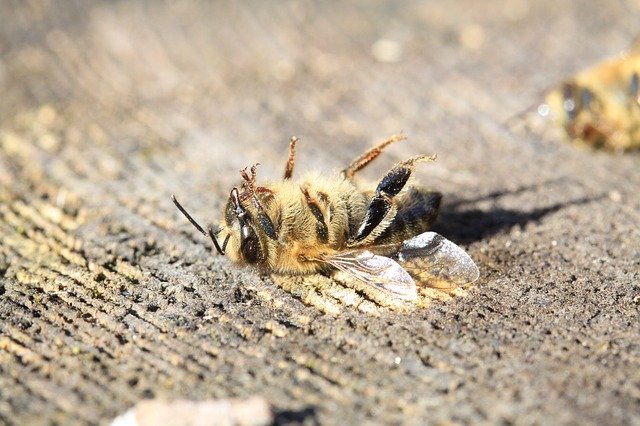
Are Asian Giant Hornets Dangerous?
The short answer is yes; these wasps have a tri-fold danger, which is why their presence has seen so much media coverage despite their currently localized incursion onto U.S. soil.
- Dangerous to Humans: Not only is the sting from an Asian Giant Hornet exceptionally painful, as noted by multiple people who were stung by the insect and have experience with the stings of other wasp species, but their venom can sometimes prove to be fatal. Though not exceptionally common, the venom from these massive pests can send a person into anaphylactic shock or organ failure; this is especially true when someone is stung multiple times during a wasp attack. On average, 50 people per year die from these hornets annually in Japan, and hundreds more are injured (some with physical effects that can last for months). Though these aren’t the most aggressive wasps, they are pack hunters and will definitely defend themselves if their nest is disturbed.
- Dangerous to Honeybees: Honeybees are a major source of food for these wasps, which feed on protein, not on pollen (like honeybees). Though the spring and summer months generally only see Asian Giant Hornets attacking other insects (like honeybees and beetles) on a one-on-one basis for meals, come the fall this will all change. As fall approaches, the demand for food for the hornet colony increases as the next generation of queens must be fed in order for them to be ready to take flight the following spring. This leads to the hornets switching tactics to that of group-foraging raids. It’s during these attacks that the hornets work together to take out an entire colony of honeybees (or even other species of hornets or yellow jackets) by decapitating the adults and carrying back the still-maturing bees as food. What makes these raids so horrifically impressive is that they are exceptionally swift, with around 15 to 30 Asian Giant Hornets able to kill between 30,000 and 50,000 bees in just a few hours.
- Dangerous Ecologically and Economically: As an invasive species, these wasps could pose a real threat to native species, which are part of a delicate ecological balance, which when shifted can have unexpected consequences. They also pose a significant danger to bees, which are a vital part of our agriculture, from pollination to the honey they produce. For example, billions of honeybees are used each year to help pollinate over 90 different agricultural crops, contributing an estimated $15 billion annually to the U.S. economy (and this is without taking into account the honey that they are most recognizable for).
Where Are Asian Giant Hornets Found?
These hornets are native to temperate and tropical eastern Asia, which includes China, India and Sri Lanka, though they are most commonly found in rural parts of Japan. Within the last year, a few nests and lone wasps have been found near Vancouver, Canada and also near Blaine, Washington; these discoveries, and the fact that the wasps (which were tested) did not come from the same colony, are what have given rise to the recent discussion about the potential for these wasps to become invasive in North America.
In the places where the hornets are found, they generally make their nests in the ground, usually in abandoned burrows, though sometimes they can also be found in dead, hollow tree trunks or roots, but are generally no more than six feet above the ground.
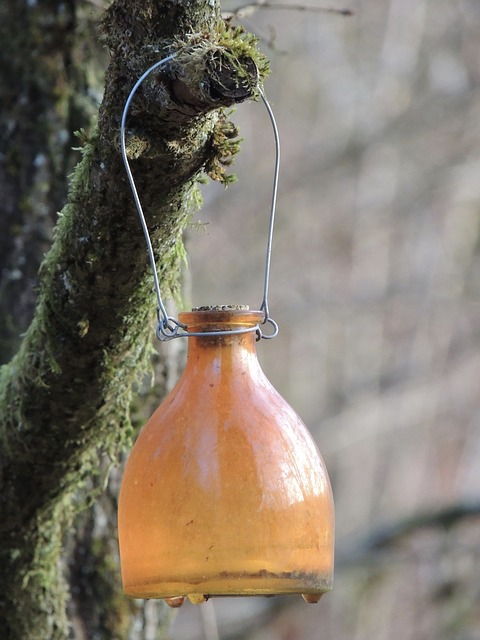
What is Being Done About Asian Giant Hornets in the U.S.?
Right now the most important thing is for officials in Canada and Washington to try to find any active Asian Giant Hornet nests and eradicate them. If they can find and eliminate these hornets in the next few years, they will have prevented the threat posed by these winged giants. However, given the difficulty in locating the underground nests, this is no small undertaking. Efforts are being made to create and place wasp traps that are large enough to catch these giants, while also exploring other means of locating their nests (such as thermal imaging or trackers attached to the wasps themselves).
What Should You Do if You See an Asian Giant Hornet?
First off, if you see one of these hornets, do not attempt to kill it as that may provoke the insect and could put you in a dangerous situation. If you think you see one, do try to get a picture and reach out to an expert for identification and to report the sighting. One great option is to send the picture to Texas A&M AgriLife Extension via this online form.
Though Asian Giant Hornets have not made their way to Texas (and hopefully never will!), that doesn’t make our local wasps any less of an issue (or any less dangerous; remember that people can die from allergic reactions to wasp & hornet stings of many species) in residential or commercial settings. If you are having an issue with wasps swarming your property or getting inside your home or office, just give The Bug Dude a call at 817-354-5350 and let our expert technicians help keep you safe.
Further Reading:
“The Top Ten Invasive Species in Texas” – Yana Skorobogatov – StateImpact
“Invasive Species Definition Clarification and Guidance” – National Invasive Species Information Center – U.S. Department of Agriculture
“The “murder hornet” is as bad as it sounds” – Alexandra Ossola – Quartz
“‘Murder Hornets’ in the U.S.: The Rush to Stop the Asian Giant Hornet” – Mike Baker – The New York Times
“Asian Giant Hornets” – Michael J. Skvarla – PennState Extension
“Get To Know The Asian Giant Hornet” – Olga Kuchment – Texas A&M AgriLife Communications
“The Cost of Invasive Species” – U.S. Fish & Wildlife Service
“More ‘murder hornets’ are turning up. Here’s what you need to know” – Susan Milius – ScienceNews
“Just How Dangerous Is the ‘Murder Hornet’?” – Paige Embry – Scientific American
Author Bio: Alissa Breach has been gaining knowledge and experience around pest control concerns over the last 11 years while working for Mid-Cities Pest Control. She has a creative writing BA from UW-Madison and is always pursuing new and interesting writing projects.
Photo Credits:
Alexis Mora Angulo
rostichep
Paul Henri Degrande

